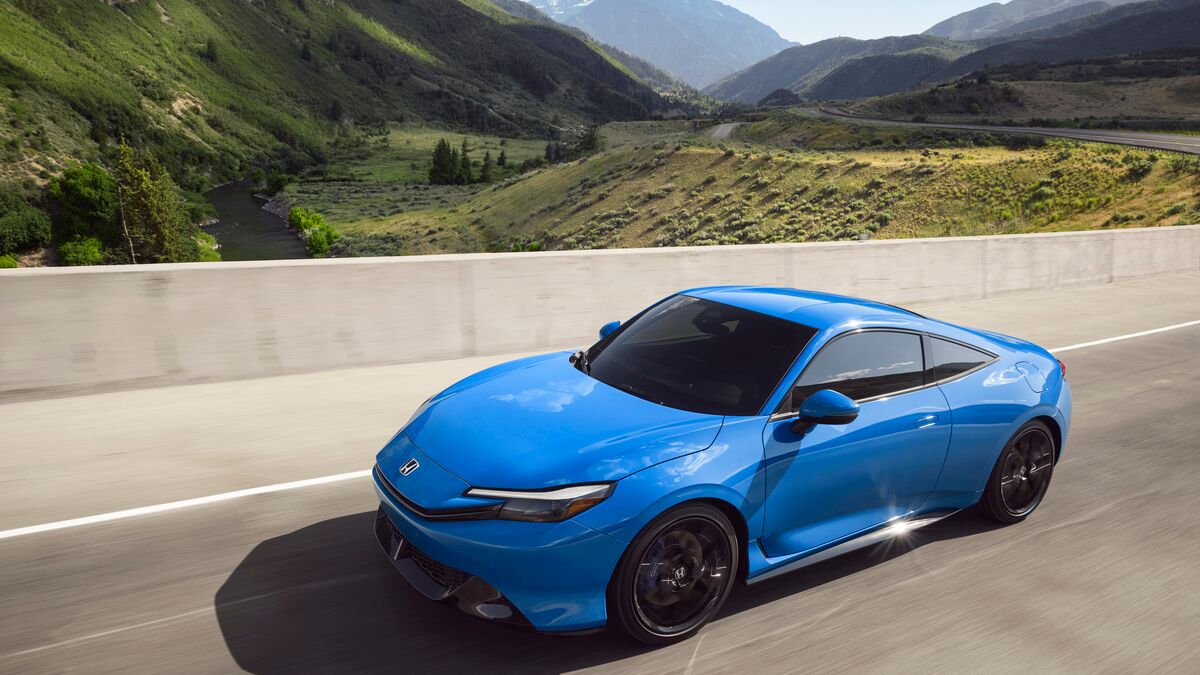Nearly four decades after the last Dart left the production line, Dodge is reinventing the car for a new generation. Unlike the recently reborn Dodge Challenger – a modern but familiar take on the ’70s muscle car – the 2013 Dodge Dart shares little more than its moniker with the original.
When it goes on sale in June, Dodge’s first compact sedan since the Neon will find itself in a red-hot segment teeming with both proven legends and world-beating newcomers. The Honda Civic and Toyota Corolla remain two of the best-selling cars in the country, but they’ve never had the competition they face today from the likes of the Ford Focus, Chevy Cruze, Hyundai Elantra and Mazda3.
In this segment, value and fuel efficiency remain paramount for buyers. The 2013 Dodge Dart will come to market with both, but hopes to set itself apart with an injection of attitude and class-exclusive features such as a big 8.4-inch LCD touchscreen and available heated steering wheel. As for the attitude, that comes in the form of more than 100,000 customization schemes (Dodge’s math, not ours), scads of available Mopar add-ons, and attractive styling that can go head to head with the increasing numbers of high-style sedans in the segment.
The Dart is actually based on Europe’s Alfa Romeo Giulietta hatchback, now a Chrysler cousin since Fiat took control of the American automaker. Although it’s the first Chrysler Group vehicle based on a Fiat vehicle platform, the new Dodge Dart will be built in Belvidere, Illinois. While the architecture is similar to its Italian kin, the front-drive, 5-passenger Dart sedan is very much its own car.
The Dart will arrive with a price starting under $17,000 including destination charge, and will offer three engine choices in a model lineup that spans five trims. The base engine is a 160-horsepower/145 lb-ft of torque 2.0-liter 4-cylinder that is standard on SE, SXT, Rallye and Limited models, which will range from $15,995 to $19,995. A turbocharged 1.4-liter 4-cylinder that makes 160 hp/184 lb-ft of torque will be optional on trims SXT and higher. At the top of the lineup, and due in the third quarter, will be the fastest-flying Dart of the bunch, the R/T model with a 2.4-liter 4-cylinder that makes 184 hp/171 lb-ft of torque and starts at $22,495. Regular Dart models will have highway fuel economy in the mid- to high-30s, and Dodge says a fuel-frugal Aero version arriving in Q3 will attain "at least" 41 mpg on the highway.
After driving preproduction models with the first two engine choices that will be available, we give the 2013 Dart an A for effort and a solid B on execution.
Distinguished by its crossfire grille and sweeping headlight lenses up front, and its curvy back with available racetrack LED lights in the rear, the Dart is one eye-catching vehicle that will help to further raise the benchmark of design for compacts. And the Dart’s good looks go deeper than its sheet metal.
Dodge’s intentionality of stepping up quality is apparent in the Dart’s interior, which features plenty of soft-touch surfaces and just a minimal amount of the dreaded hard plastic that shouts, "I’m an economy car!" The available 8.4-inch video screen that relays all manner of audio, climate and vehicle info is dazzling. It’s standard on Limited and R/T versions, or a $595 bargain option on lower models. An additional $495 buys navigation functionality.
And the interior is quite roomy. In fact, while the 2013 Dodge Dart competes squarely in the compact car segment, its 97.2 cubic feet of interior volume earn it a midsize designation from the EPA. The driver and front-seat passenger benefit most from this room. Taller passengers in back will still find legroom a bit tight, but the seats well-bolstered. And here we must mention, believe it or not, the Dart’s glove compartment. It’s more like a jacket compartment, because the thing is simply cavernous. We got elbow-deep, literally. There’s also a storage area under the front passenger seat, though only about enough for a sandwich – and you’d better remember it’s in there.
On the road, the base 2.0-liter inline-4 will work fine for most people’s needs and in most situations. On all but the most challenging roads the engine pulled well and seamlessly ticked through its six gears when linked to an automatic transmission. On one particularly steep hill the engine struggled, and in normal driving it droned noticeably. Step up to the 1.4-liter turbo 4-cylinder, and things improve appreciably. Though smaller in size, this mill puts out more twist, the extra power gained thanks to a turbocharger that feeds it one of the ingredients engines crave most – air. On our test model the engine was linked to a 6-speed manual transmission operated via an easy clutch and a gearshift with throws we found a bit on the long side. Unlike the base engine, this one also sounded peppy. Both cars were quiet when it came to wind noise, but road noise on rougher roads was apparent.
The driving experience in general favored comfort over corner carving. As for Dart models with the base 2.0-liter 4-cylinder, they are a welcome dance partner in this segment, but for the engine and road noise that snuck into the cabin. Models with the 1.4-liter turbo are no slouch, but neither are they a Mazda3, which feels more dynamic and still offers great fuel economy, especially when fitted with the Skyactiv engine. We’re eager to get behind the wheel of the R/T to see how fast the new Dart can really fly.
Buyers will still find a whole lot to like in these initial Dart models, not the least of which are value and great design. The 2013 Dodge Dart, especially with the base engine, doesn’t hit the bull’s-eye, but it comes pretty close.







